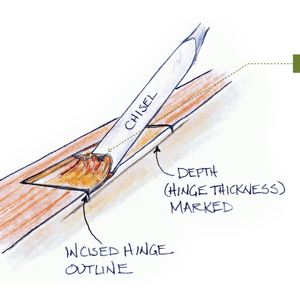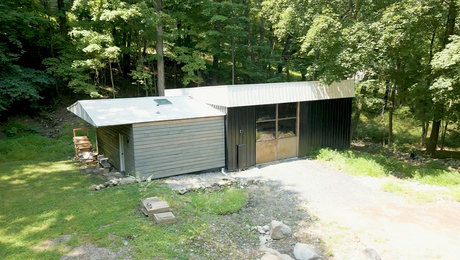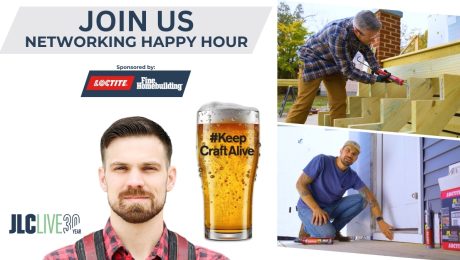To Build a Future Workforce, Embrace Neurodiversity
Learning more about accommodating neurodivergence in the trades can help grow a much-needed workforce.

According to Associated Builders and Contractors, the construction industry needs to attract over 500,000 new workers this year to meet demand—but it’s likely you don’t need a statistic to tell you that. The labor shortage, exacerbated by an aging workforce, highlights how critical it is that those already in the architecture, engineering, and construction (AEC) services sector not be seen as disposable. To compound matters, our industry has a lot of catching up to do to captivate the next generation.
Meanwhile, research coming out of the UK reports that construction has a significantly higher than average percentage of workers who identify as neurodivergent—that is, people whose brains function differently from so-called neurotypical brains. It is estimated that between 15% and 20% of the world’s population is neurodivergent. Learning more about accommodating neurodivergence in the trades can help grow a much-needed workforce.
What is Neurodivergence?
The Autistic Self Advocacy Network defines neurodivergence as “an umbrella term that encompasses neurocognitive differences such as autism, attention deficit hyperactivity disorder (ADHD), dyslexia,” and others.
Mel Houser, a family physician with All Brains Belong, explains it this way: “Like many other forms of diversity, the ways in which the majority [of people] … do things have been assumed the default [and] only way of doing things. For one in five people who learn, think, or communicate differently from the majority … that is not so.”
When the default is neurotypical, there are increased social and professional barriers for the neurodivergent population. For example, executive functioning is a set of cognitive skills that includes working memory, flexible thinking, and self-regulation. Neurodivergent brains work differently when engaged in executive functions.
Some neurodivergent people have difficulty making direct eye contact and reading social cues; some speak bluntly and are misinterpreted as rude. Information processing, sensory overstimulation, and a strong need to minimize distraction can all present challenges.
Neurodiversity in Construction
Stigma and discrimination surround these differences. Statistics show that the unemployment rate for neurodivergent individuals in the U.S. is as high as 40%. This doesn’t need to be the case.
Initiatives to create inclusive workplaces result in building more-resilient businesses that are better able to attract and retain their most valued employees. We can’t afford to lose good workers or miss out on potential recruits.
“Just because I learn things differently does not make me any less capable,” says one autistic electrician interviewed for this column. “I might not smile or look you in the eyes, but I am going to be meticulous and have a drive that surpasses a lot of the others because I don’t have much of a desire to socialize and am motivated to learn.”
Those whose brains process information in ways that are outside of the norm also bring with them perspectives that are essential in any industry but are particularly helpful in construction, where so much of the work comes down to creative problem-solving.
One interviewee describes the trades as perfect for someone with ADHD because of the constant movement, the physical aspects of the work, and the shifting tasks. “Most people with ADHD don’t do well with homeostasis,” he says. “We need to move.”
Another, a builder with ADHD, urges business owners to get more comfortable meeting people where they are—learning their skill sets and what they need to be successful, then figuring out systems to set them up well. “If you grow up with a stigma, it can impact your confidence,” he says. “Find ways to bring out people’s strengths, and set them up for success so they can shine.”
So how do you make your company a place where neurodivergent workers can do their best work? Whenever possible, include someone who specializes in neurodiversity and inclusion for support—such people are ideally neurodivergent themselves. For a start, consider some of the strategies listed here in “Creating a more inclusive workplace.”
Creating a More Inclusive WorkplaceIntegrating the strategies listed below into your business can help every employee—not just those who are neurodivergent—do better work. Awareness and Education
Recruitment and Hiring
Onboarding and Training
Leadership and Organizational Culture
Accommodations and Accessibility
|
Better for All
Many of the changes we could implement in our workplaces and job sites to reduce barriers and improve success for neurodivergent people would also benefit others. This is the curb-cut effect, which refers to disability-friendly features being used and appreciated by a larger group than intended, as in the case of curb cuts.
They benefit not only people in wheelchairs but also those pushing strollers, among others. Inclusivity in construction means ensuring that everyone who wants to be on the job site and is ready to contribute their unique perspectives and skill sets feels welcomed, respected, and set up for success, and that their value is acknowledged.
It is a heavy lift to attract, recruit, train, and retain the next generation of tradespeople. Culturally, they will demand that our industry evolve. Increasing our awareness of neurodiversity (and other forms of human diversity) and building inclusive work environments not only is the right thing to do but is also critical to our ability to carry out the work ahead of us. Embracing change is our best strategy for continuing on as an innovative and impactful industry.
— Mel Baiser (they/them); cofounder of HELM Construction Solutions. Contact [email protected] for questions or to receive the neuroinclusivity toolkit.
RELATED STORIES




























